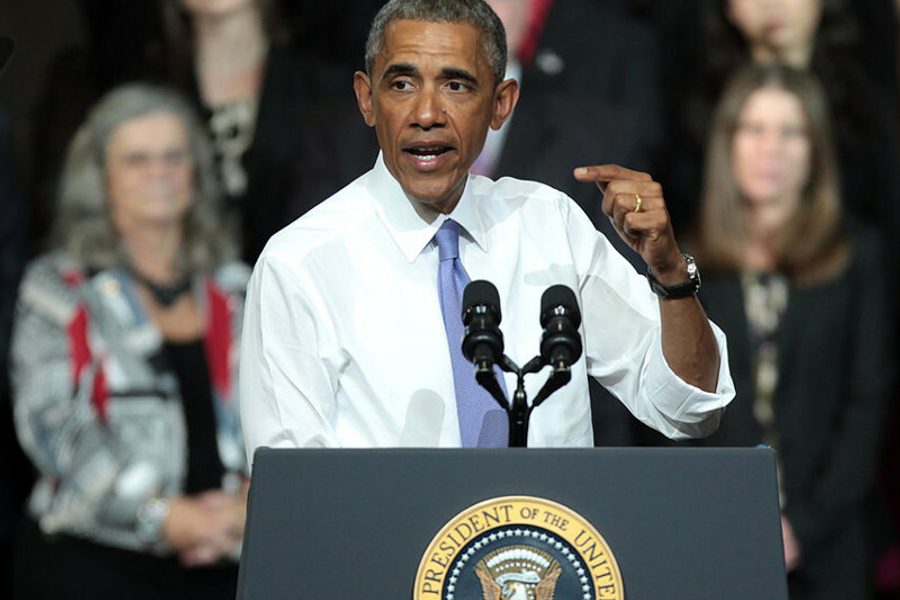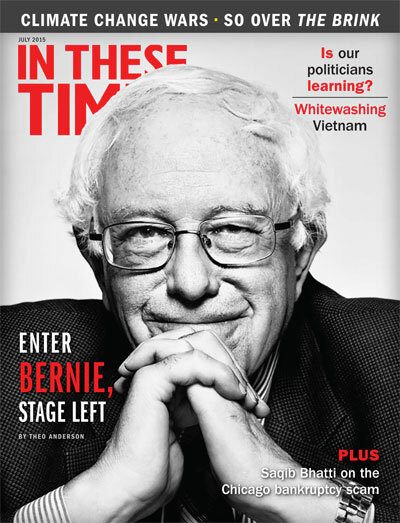The Secrets and Lies of the Trans-Pacific Partnership
President Obama insists there’s “nothing secret” about the massive trade deal—yet we aren’t allowed to know anything that’s in it.
Joel Bleifuss

Much has been said about the Trans-Pacific Partnership (TPP), the secret trade agreement between 12 Pacific Rim nations — including the United States — which together account for about 40 percent of the world economy. Not all the words spoken have been factually accurate.
“Nothing secret about it,” wrote Obama in a tweet on May 28.
The president is correct if by “nothing secret” he means the TPP has been pored over by 600 or so “cleared advisors” invited by the U.S. Trade Representative to review the agreement. Almost all of these advisors are employed by trade associations or corporations, including three who work for Walmart. Nor is the TPP secret from members of Congress who can read the agreement’s hundreds of pages in a secure facility— but may not take notes, make copies or divulge details.
On April 23, Obama challenged critics who liken TPP to NAFTA: “You need to tell me what’s wrong with this trade agreement, not one that was passed 25 years ago.” Writing in Politico, Michael Wessel, one of the few cleared advisors not on a corporate payroll, explained one thing that’s wrong: “The government has created a perfect catch-22: The law prohibits us from talking about the specifics of what we’ve seen, allowing the president to criticize us for not being specific.”
On May 8, Obama answered critics in the labor movement by saying that TPP, unlike NAFTA, makes the labor provisions “actually enforceable.” According to the White House press office, TPP “will help level the playing field for American workers” by “ensur[ing] the rights of workers to form unions and bargain collectively.” AFL-CIO President Richard Trumka, another cleared advisor, says he knows that TPP does no such thing. At a May 18 news conference, he said, “We can’t tell you without going to jail because it’s a classified document. But here’s what I can tell you: What we have seen falls short — far, far, far short — of what it should be to protect workers’ rights.”
On May 8, in an interview with Yahoo News, Obama said of Sen. Elizabeth Warren’s very public opposition to TPP: “She’s absolutely wrong. … Her arguments don’t stand the test of fact and scrutiny.”
Warren is worried that TPP’s Investor-State Dispute Settlement (ISDS) provision will give corporations a legal mechanism to challenge the regulations of signatory nations. She fears the financial industry will use the provision to undermine Dodd-Frank banking reform legislation. (Her concerns are shared by both Harvard Law School professor Laurence Tribe and Nobel Prize-winning economist Joseph Stiglitz.)
“That is not true,” Obama told Yahoo News. To which Warren responded, “If the president has changed ISDS to solve the problem, then the text should be released so that legal experts can look at it.”
Before making TPP public, Obama is demanding that Congress agree to fast-track the future congressional vote on the agreement, thereby preventing Congress from amending it in any way. Margot E. Kaminski, who teaches law at Ohio State University, has called on lawmakers to address the pressing issues of secrecy and the role of cleared advisors in crafting TPP. If Congress fails to do so, the “fast” in fast track, she says, “will be little more than a euphemism for ‘avoid the public and benefit the fortunate few.’ ”
Joel Bleifuss, a former director of the Peace Studies Program at the University of Missouri-Columbia, is the editor & publisher of In These Times, where he has worked since October 1986.









